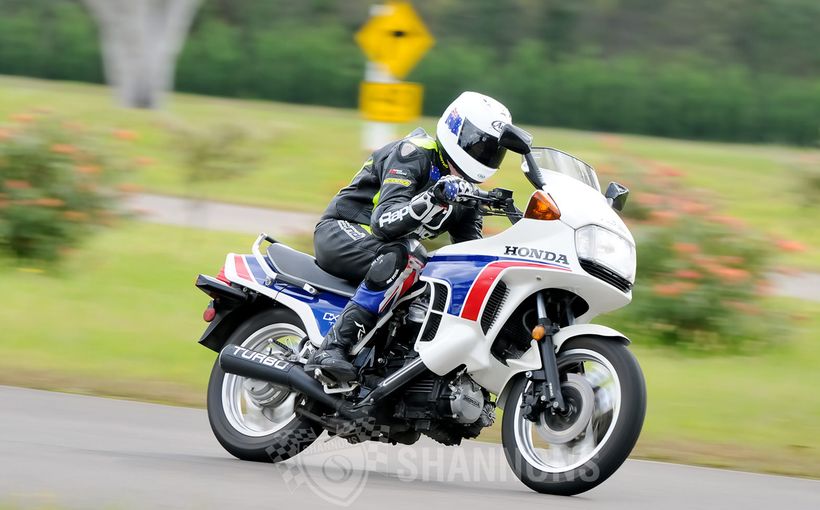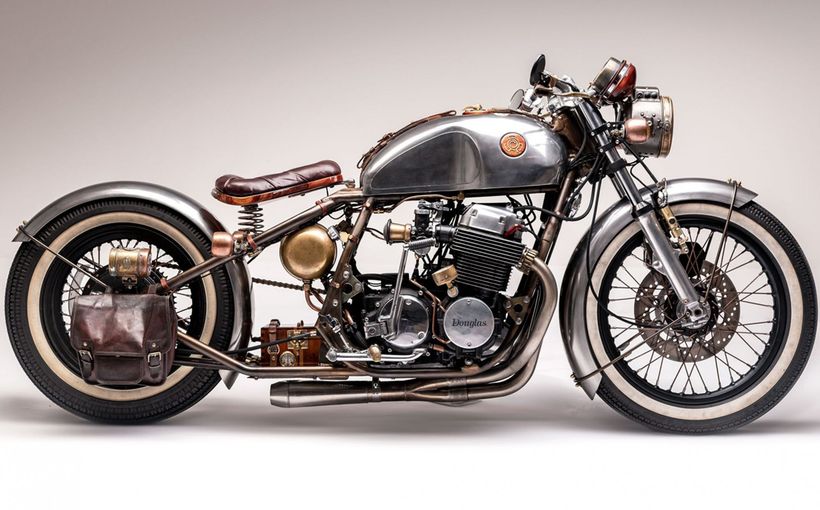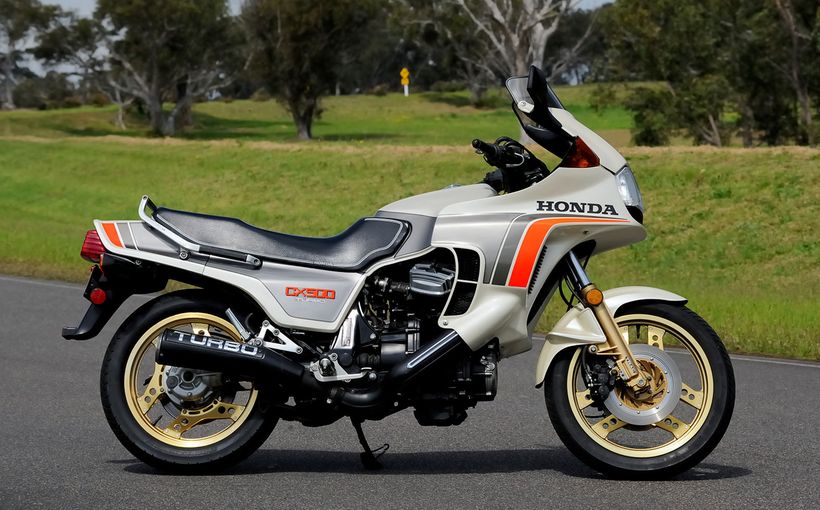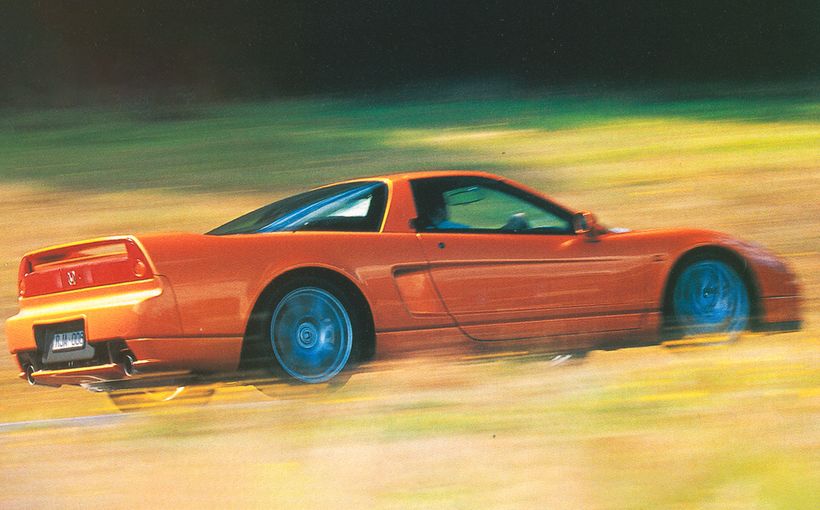Honda NSX: Nothing Short of eXceptional

Nineteen eighty-nine was a landmark year for the Japanese industry, with not just one but two re-imagined sports cars. The Mazda MX-5 was a modern take on those 1960s British classics, the Lotus Elan and MGB. But the Honda NSX was the first Japanese mid-engined supercar. You could also add the leaner, meaner new Nissan 300ZX to make three exciting new and aspirational Japanese sports models. While the MX-5 and 300ZX were production-ready in 1989, the NSX was still undergoing the final process of refinement.
In a display of great confidence, Honda even allowed selected journalists to test prototypes at its own proving ground.
Journalists, being journalists, couldn't resist dubbing this new machine ‘Honda’s Ferrari,’ and by the time those few members of the international automotive press had received their invitations to attend Honda’s Tochigi Proving Ground to sample a pair of prototypes, six months had passed since the company displayed a similar car at the Chicago Auto Show in February. It stole that show and didn’t fare too badly when shown in Melbourne and Sydney in 1990 (back when not only were motor shows held annually but each of Australia’s biggest cities hosted one each)!
While the NSX would occupy the opposite end of the sports car spectrum from the MX-5, there was a similar purity of engineering intention to both. In much the way the 1989 Z-Car eschewed the flashiness and softness of its two immediate predecessors, so, too, did the NSX avoid all ostentation and superfluity. It might seem remarkable now, but the original plan was to equip all manual cars with unassisted steering.

At that drive day there was a red manual and a silver automatic. ‘These are different cars,’ said Peter Robinson and his successor as Wheels editor, Phil Scott, concurred. Amazingly, the manual prototype weighed 1300kg neat, helped by an all-aluminium body, which was also immensely strong.
Perhaps inevitably, by the time the NSX was set for the manufacturing line, the decision had been taken to offer power steering on all variants. All Australian-delivered cars were thus equipped, even though purists would have preferred the extra heft of the manual system. And the wheelbase had been stretched by 30mm from the prototype’s 2500mm. Weight was also up by 70kg. But when you consider the inclusion of air-conditioning, anti-lock brakes, traction control and a high level of standard equipment – as well as the car’s 1811mm width – that figure was very impressive; this century many small hatchbacks weight 1370kg or more.
Honda’s aim was not in fact to build its version of a Ferrari 328, but rather to create the most sophisticated modern sports car in the world. With its transversely mid-mounted, naturally aspirated quad camshaft 3.0-litre V6, double-wishbone suspension front and rear, specially formulated Yokohama A-022 50-series tyres and widespread use of aluminium and aluminium alloy (the beam supporting the dashboard representing the only use of steel in the entire car), the mid-engined Honda seemed to have achieved that goal before turning a wheel. Probably its major target market was the US, where it was sold as the Acura NSX. But it was also intended to show Honda’s absolute competitiveness with the European makers, and particularly the upmarket Germans. Before the launch of the Lexus and Infiniti marques, Honda’s ascendancy among the Japanese manufacturers had been beyond question.
In Australia, Honda’s unique status had been established by the Civic (1973, locally) and the Accord (1977), while those classic little rear-drive sports cars proved that Soichiro Honda could build a better alternative to the Austin-Healey Sprite/MG Midget twins. But, it’s fair to say, that none of these cars prepared us for the delightful surprise of the NSX.

If anything, the driving experience was even more rewarding than the specification promised. Comparing the NSX with the new Ferrari 348 tb in the November 1990 edition of Wheels, Robinson wrote:
The Honda is a superb exercise in taming a high performance machine, a permit for the average age person with no special background to enter the world of high speed driving.
It was not, said Robinson, as full of passion as the Ferrari:
The men at Maranello believe cars are for driving, and for that reason alone character and brio come before all other [characteristics].
My own time of experiencing the Honda NSX was some three years after Robbo’s test. I still hadn’t driven any Ferrari. The occasion was special. At the time I was editor of The Best Car & Sports Driver Magazine. We had assembled a quartet of Rising Sun red sports cars, ranging from a $39,990 Mazda MX-5 Classic, through a $47,115 Toyota MR2, $80,450 Mazda RX-7 twin turbo to the NSX, which by then carried a price tag of $192,480 before on-road costs.
It was love from the first moment. ‘The RX-7,’ I wrote, ‘is the brute in the dinner suit. the NSX is Adonis on wide wheels.’ Perhaps the essential element of the Honda was its purity, its subtlety. Despite giving ground to the Mazda in acceleration, there was never any doubt which car would prove faster in the real world of Point A to Point B. I wrote back in the spring of 1993:
It has the best steering in the group, far and away the best roadholding, a bewilderingly supple ride, the best gearchange and the most comfortable interior. This is the unthinking motorists' supercar, that handles an interstate cruise as well as a BMW Five Series and the Targa Tasmania better than anything else. I found the NSX to be more thrilling than I had expected and its margin of superiority over the RX-7 almost as commanding as its price tag implies.
Here was Honda’s first rear-wheel drive car since the Honda S800 sports car. Even the company’s newly launched luxury Legend sedan (1986) and coupe (1988) were front-drivers. If the Legend consolidated Honda’s position as the prestige Japanese car company, the NSX took this supremacy to a higher plane again. Doubtless, too, it provoked great interest and more than a little surprise in Maranello. With weight distribution of 43:57, the car was very willing to respond to steering inputs, but was never nervous in the manner of an air-cooled Porsche 911, always ready to swap ends in the hands of an insensitive driver too inclined to lift off the throttle mid-corner. Doubtless, extensive input from Formula One icon Ayrton Senna was critical to the NSX’s sublime dynamics.

Still on the subject of purity, the 3.0-litre V6 didn’t require a turbocharger (let alone a pair) to develop 201kW of power at 7100rpm. In this respect, it rivalled the Ferrari 348 tb, whose 3.4-litre naturally aspirated V8 made 221kW at 7200. Of course, the Ferrari had superior torque, delivered at lower rpm (323Nm at 4200, compared with the Honda’s 285 at 5300). But the brilliance of Honda's VTEC variable camshaft timing technology went beyond numbers and, despite being merely 23kg lighter than the 348 tb, the NSX equalled its zero to 100km/h split of 5.6 seconds, supercar territory in 1990. The Italian car posted a 14-flat for the standing 400m, one-tenth ahead of the best car yet seen (by 1990) from the Land of the Rising Sun (and I include the LS400 in that assessment).
It was a superb engine, almost uncannily smooth, happy to rev to 8000 (automatic cars got a detuned engine with a 7500 limit), and possessing a distinctive and evocative exhaust note. Sound quality was an engineering demand from the start.

In terms of buyers’ expectations of performance, this original NSX gives us a clear insight on how rapidly these were changing. Just four years later the astonishing Subaru Impreza WRX hit the Australian market and, for the first time, brought a 14.6 second standing 400m capability into the popular price class. That same year (1994), the first six-cylinder BMW M3 offered close to the NSX’s performance and had a top speed potential beyond its governed 250km/h; it made 210kW but weighed a couple of adults more than the svelte Honda. So, in less than half a decade, what had been true supercar performance was now merely extremely high performance more readily accessible to drivers of only moderate skills.
But in the late 1980s/very early 1990s context, the Honda was the world’s only everyday supercar, a term which would have been an oxymoron before the NSX drove into view: you could drive your child to school before heading to Mount Panorama to compete in the James Hardie 12-Hour.
The interior was beautifully designed. The Honda engineers unapologetically said it had been designed to reflect themes seen in the F16 fighter plane. Driver and passenger were accommodated in what were effectively separate compartments, divided by a centre console. Build quality was superb.

Perhaps Honda could have allowed itself a tad more romance in designing the cabin. Why not do a Honda-flavoured take on Ferrari's gorgeous trademark exposed gate gearshift and offer a lovely bright tan leather (a-la Wheels’ test 348) as an alternative to black?
Still on the issue of understatement, even in 1990 15-inch alloys were pretty much expected on ordinary sedans. (The NSX had 15s up front and 16s for the driven wheels.) The Commodore SL/E had them in 1978, the Alfa 90 in 1984. But the use of small-diameter rims allowed left-hand drive NSXs to score the driver’s footrest which the right-hand drive Ferrari 348 lacked. Still on practical issues, the Ferrari could not accommodate 240 litres of luggage behind the engine, not that you’d want to on hot laps of, say, Mount Panorama!
The first generation Honda NSX was produced from 1990 to 2005 and received steady upgrades throughout its life. A T-Top version was offered from 1995. In 1997 it received a 3.2-litre engine as well as a six-speed manual gearbox and it was perhaps a little odd that the original had just five forward ratios. In 2002 the car was facelifted. After the initial demand was met in the early 1990s, Australian sales were little more than a trickle.

Perhaps the single most surprising thing about the brilliant Honda NSX is that it encouraged so few similar cars from rival Japanese manufacturers. According to Wheels in the July 1990 edition:
Honda’s final production version of the NSX supercoupe marks the beginning of a dynasty unthinkable even two years ago. A dynasty of Japanese engineering versus European pedigree, at the uppermost limits of the supercar league.
It never really happened. In 1990 when the NSX went on sale, arguably Toyota was poised to take over the mantle of Japan’s most prestigious carmaker with its Lexus LS400. But it was not until 2010 that Lexus produced its LFA and even then in strictly limited numbers. (The LFA was, like the first generation NSX, a clear statement of product ascendancy and Toyota never expected it to be profitable in simple bottom line numbers.) Frankly, the weapons grade Nissan ‘Godzilla’ GT-Rs are in a different category from the NSX, which belongs in the special world of mid-engined supercars.

Only at the midway mark of the second decade of the twenty-first century did Honda declare it would produce a second generation NSX. That car has sold in tiny numbers, suggesting perhaps that Honda waited too long to create a successor to the highly acclaimed original. In the meantime, the 1990-2005 NSX will only become more collectible as the years flick by: Japan’s first supercar is among its most unforgettable vehicles in a long and colourful history.













